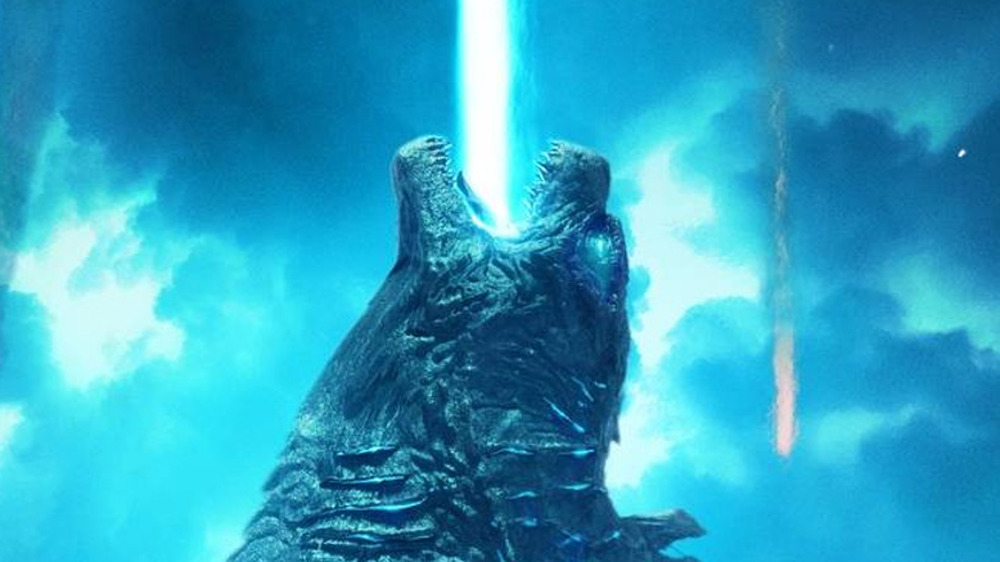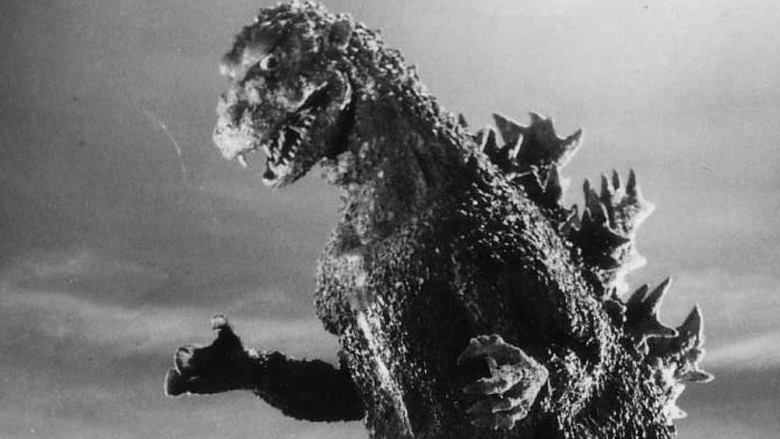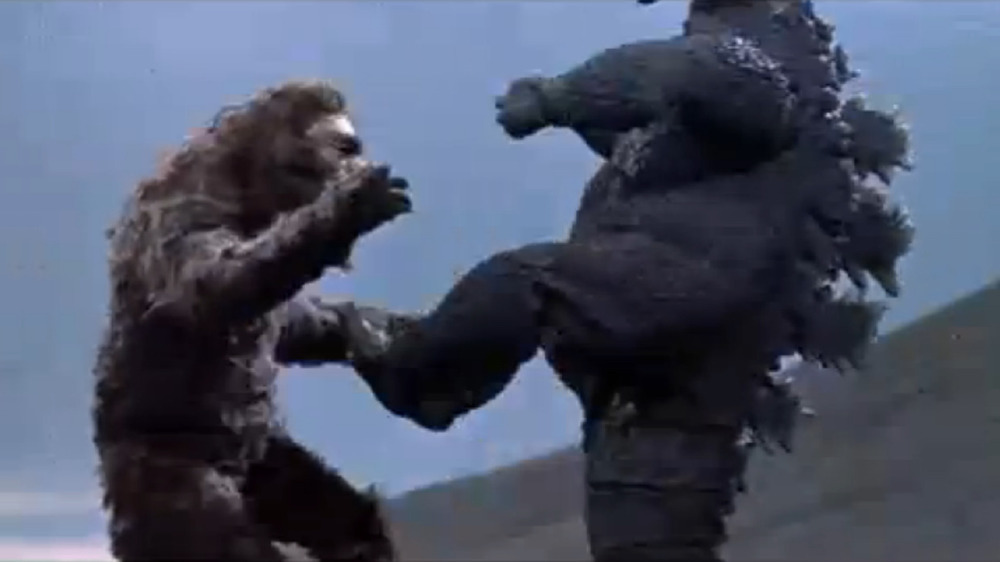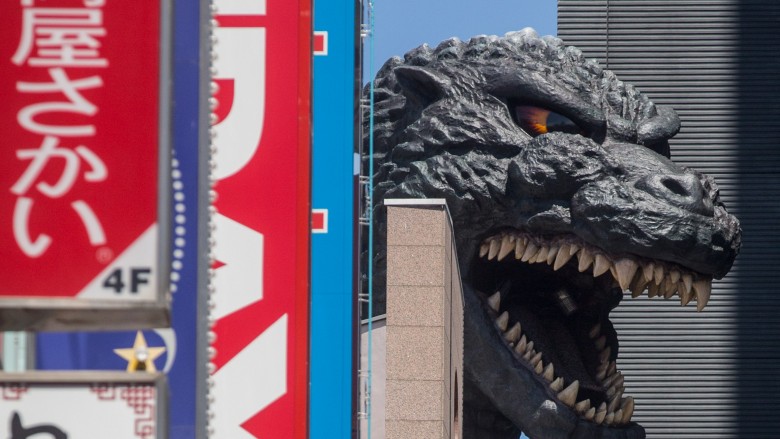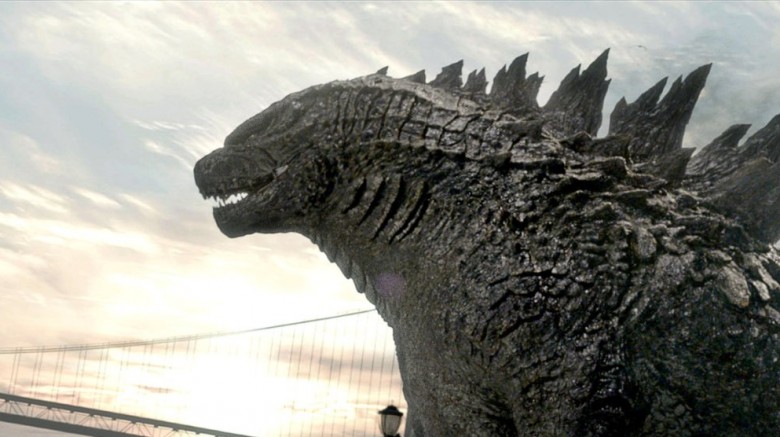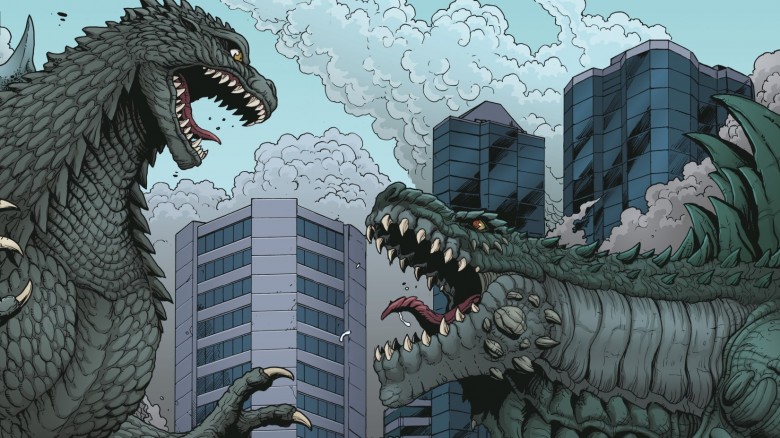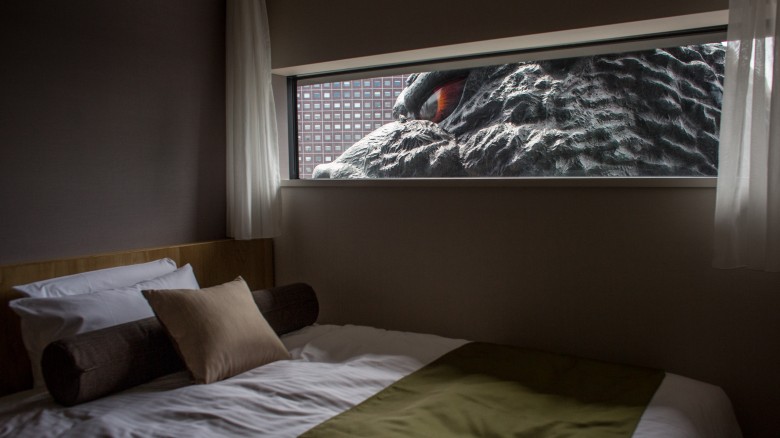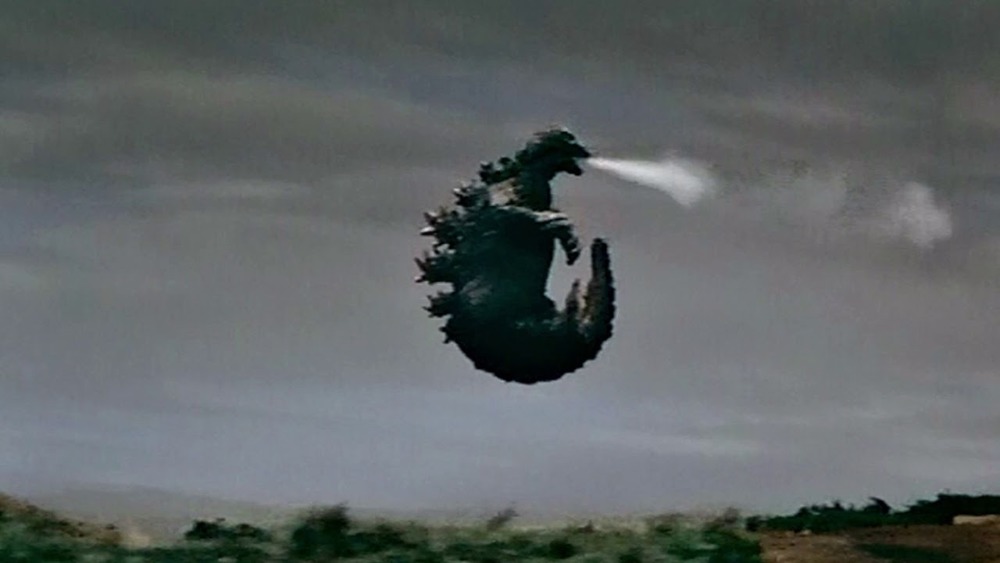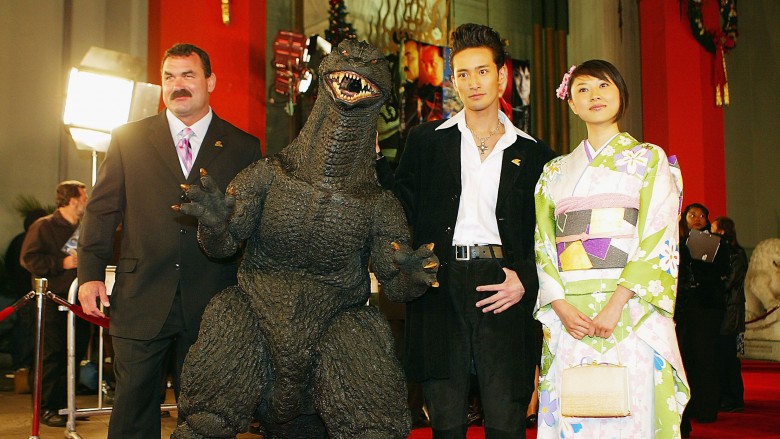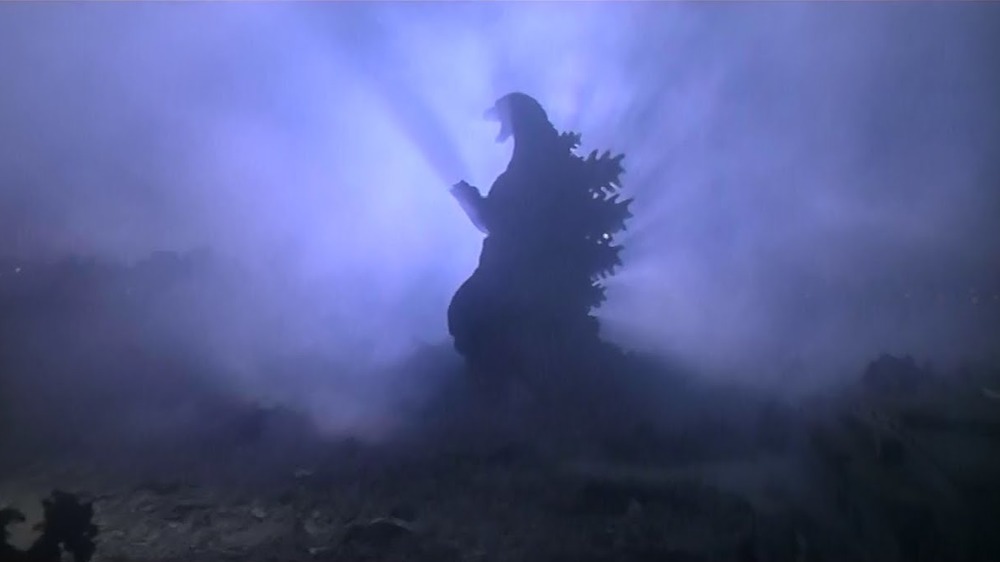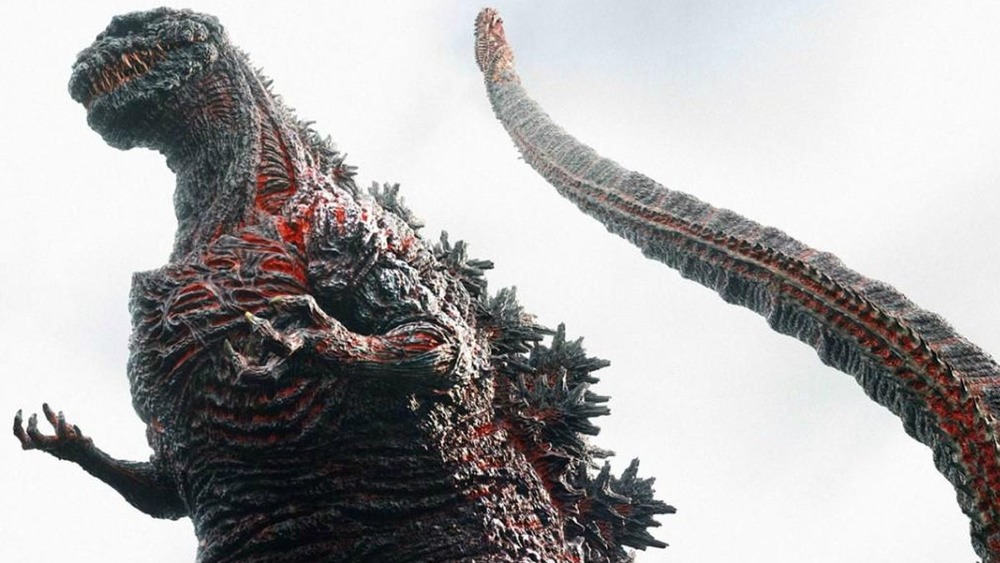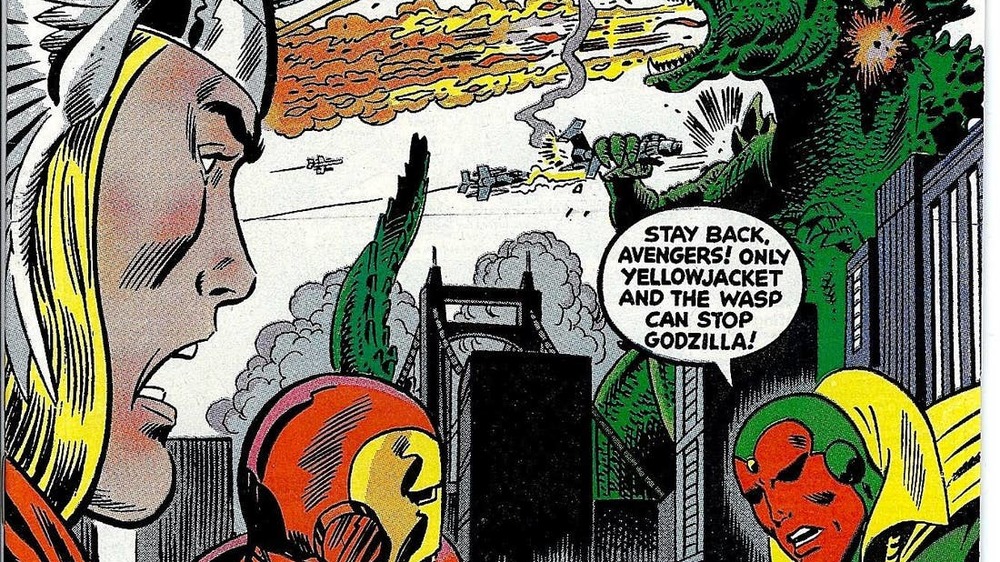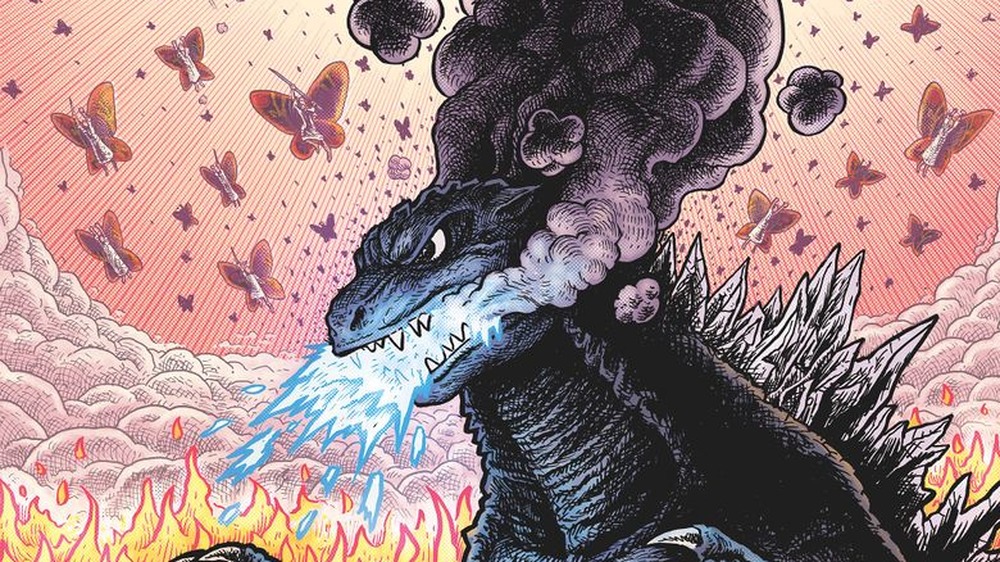The Untold Truth Of Godzilla
It doesn't matter how many Kong movies or Pacific Rim sequels Hollywood throws at us—we all know in our hearts that Godzilla is the real king of monsters. But in spite of the fact that the big scaly grump has been a fixture on our screens for decades, there's still plenty of stuff most people don't know about the history of the franchise. Ever wondered who was playing Godzilla inside that lizard suit in the early films? Curious about the ins and outs of franchise continuity? Ready to delve into the mysteries of how his roar is created, or where the flop 1998 Godzilla movie currently sits in terms of canon? Get ready for the answers to all those questions and more, because here's a list of lesser known facts about everyone's favorite giant lizard—the untold truth of Godzilla.
His skin is based on the keloid scars of Hiroshima victims
Given that he's largely known for starring in a series of cheapie creature features, it's easy to forget Godzilla was originally intended as a heavy-handed and fairly blunt metaphor for the dangers of nuclear weapons. As the scars of World War II have faded, this aspect of Godzilla's character has been toned down somewhat in favor of showing the Big G backhanding creatures from a city block away with his tail. This said, Godzilla's roots are still subtly represented in his character design—specifically his skin.
The original Godzilla suit, which has served as the basis of every iteration of the character since, was directly inspired by the horrific keloid burns and scars of the unfortunate souls who survived the nuclear blasts at Hiroshima and Nagasaki. This was done to serve as constant reminder that Godzilla was birthed as a direct result of a nuclear weapons tests and possibly explains why he screams so much, since it suggests he's in near constant pain.
He knows judo
Watching some of the fight scenes in his earlier movies, you'd be forgiven for thinking that Godzilla's entire fighting style revolves around throwing clumsy claw swipes and haphazard tail swings at his enemies. You know, except for that one time he dominates Megalon with a dropkick delivered at Mach 3 with the help of Jet Jaguar. As it turns out, though, Godzilla actually fought using more grace than most would give him credit for—and in fact, technically had/has a black belt in Judo.
The actor who first played Godzilla, Haruo Nakajima, became so accustomed to the weight and limitations of the Godzilla suit that he was largely given free rein to script and choreograph all of his own fight scenes. Nakajima spent many years perfecting Godzilla's fighting style, basing it mainly on Judo (in which he had a black belt) adapted for Godzilla's ambling bulk and large, lizardy girth. This is why if you watch early films in which Nakajima played Godzilla, you'll notice he seems to favor chokeholds and throws, supplemented by blasts of atomic fire breath—something we're sure would be a part of actual Judo if it was possible.
Nakajima is often considered one of the best actors to have ever played Godzilla, and a lot of the characterizations he put into the character, like his fighting style, have been carried over with subsequent iterations. Sadly, for the 2014 reboot, they toned down Godzilla's fighting skills quite a bit, making them more animalistic in nature. This is a shame; we'd have loved to see some of his moves from Invasion of Astro-Monster make an appearance.
His height changes in each movie
In his original movie incarnation Godzilla stood about 164 feet tall, and has gotten steadily taller with each reboot of the franchise, more than doubling in height to about 390 feet tall in the latest Japanese film. You're probably thinking that increasing Godzilla's height has a lot to do with the ever-increasing size of modern buildings—and you'd be right, but there's slightly more to it than that.
In the original 1954 movie, a conscious decision was made that Godzilla had to be just slightly taller than every building he appeared next to. The idea behind this being that Godzilla would be visible on the city's skyline no matter where you were, making him an ever-present threat. To make this possible, buildings that were taller than Godzilla at the time were deliberately scaled down further than others when constructing miniatures.
As the skyline of Japan got bigger, so did Godzilla, although this idea dropped by the wayside for more recent movies, as making Godzilla the size of modern skyscrapers would make him too big—a problem we wouldn't think anyone would care about until we heard that prior to the release of the 2014 movie, hundreds of people called the new design fat. Hey, speaking of the 2014 movie ...
His roar in the 2014 movie was one of the loudest things ever recorded
Next to the Wilhelm scream and that stock noise of a dolphin you always seem to hear in terrible movies, no noise in cinematic history is as recognizable as Godzilla's roar. Initially created by rubbing a leather glove along the strings of a bass guitar, the original recording of the roar is safely kept in Toho's offices, occasionally being used to serve as the basis of an updated version.
Using the method used to create the original roar as a starting point, the sound designers for the 2014 movie worked in secret to create the new, updated Godzilla roar—and revealed in an interview with NPR that they've sworn never to reveal the exact process they used to make it. Which is weird, because if you look in the art book released alongside the movie, Godzilla: The Art of Destruction (a copy of which the author owns and doesn't recommend because it spends more time talking about Mutos than Godzilla) or this article from The Atlantic, they tell you exactly how they did it. (For anyone curious, they used the sound of dry ice on a metal vent, some crunching rocks and the noise made by a wooden crate being dragged across a polished floor.)
When the sound engineers had the final version of the roar, they got in contact with the Rolling Stones and asked to borrow the speakers they used on tour, then played the roar through them as loudly as possible. The resulting noise was so loud it shook windows for several blocks and caused a terrified executive at Universal Studios three miles away to call and ask what was going on. Along with being used to demonstrate to the crew what a real Godzilla roar would feel like (and an excuse to meet the Rolling Stones), the little experiment also gave the engineers a recording of what the roar would sound like actually reverberating off buildings. This was then combined with the finalised version of the roar and mixed into the movie.
The version of Godzilla in the 1998 movie isn't Godzilla anymore
Since we've talked about the 2014 Godzilla movie, we might as well talk about the 1998 one too—and share the fact that Toho hated it so much, they changed the canon of the franchise to erase it from existence.
As bad as the reaction to the 1998 film was in the west, in Japan it was so, so much worse. One of the actors who actually played Godzilla, Kenpachiro Satsuma, went so far as to walk out of an early screening, angrily telling everyone present "it's not Godzilla, it doesn't have his spirit." Along with its unappealing design, many Japanese critics pointed out that it didn't make sense that a creature birthed by a nuclear explosion seemed afraid of missiles shot from helicopters.
When rights to the franchise reverted back to Toho after TriStar wisely chose not to try making a sequel to the 1998 movie, the company started a systematic campaign to wipe it out of official Godzilla history. The company started by dubbing the creature "Zilla" as a nod to TriStar taking "the god out of Godzilla," then put it into the film Godzilla: Final Wars, where it was unceremoniously clubbed to death by the real Godzilla.
Along with being used to establish that Zilla and Godzilla are two distinct entities, the film also shows that Zilla is significantly weaker by having his only fight scene against Godzilla end in less than 10 seconds. As a further insult, Zilla is rendered using intentionally crappy CGI and generic American rock music plays in the background as Godzilla pulverizes it into goo with his fire breath.
Toho has since featured Zilla in several comics, in which characters often note how it's usually mistaken for the real Godzilla—but is nowhere near as cool or strong—seemingly just to rub it in.
He's is a tourism ambassador for Shujinko and holds official Japanese citizenship
You'd assume based on the fact he's destroyed Tokyo half a dozen times in his movies, creates earthquakes with his every step and is a giant atomic lizard, the city wouldn't really be a big fan of Godzilla. However, the city not only loves their resident radioactive reptile, they've bestowed several unique honors upon him, granting him official Japanese citizenship and even offering him as a job as the tourism ambassador for the Shujinko district. Not bad for a giant monster without any discernible skills to offer to society beyond being able to crush all who oppose or walk in front of him.
Though positioned mostly as a PR move, Shujinko officials nonetheless went out of their way to make Godzilla's citizenship and job offer legitimate—or as legitimate as they can be, given he's a big lizard and also not real. Along with releasing an official copy of his citizenship papers to the public as a souvenir, Godzilla was awarded a nice sash in honor of his contributions to Japanese culture, which a guy in costume accepted on his behalf. Shujinko were so pleased at Godzilla accepting the position of tourism ambassador that they built a giant statue of him which, for some reason, stares directly into a nearby hotel. This means there's a hotel room where you can have sex as Godzilla peers through the window and offers moral support.
He can fly
Although he weighs several thousand tons, is several dozen stories tall and has tiny, almost comically stubby arms, Godzilla is surprisingly agile for his size. The exact extent of his ability to haul ass varies from movie to movie, with arguably the greatest and most unexpected demonstration of his agility occurring in the 1971 movie Godzilla vs Hedoarh.
If you can't watch the movie linked above (which we highly recommend), by directing his atomic breath directly at the ground, Godzilla can propel himself through the air at several hundred miles per hour. Along with increasing Godzilla's aerial combat capabilities exponentially and melting minds with its sheer stupidity, the feat raises some serious questions about just how powerful Godzilla's atomic breath is if it can produce enough force to propel him through the air. The folks over at Death Battle actually worked this out and figured out that his breath produced about 328 trillion pounds of force per square inch, essentially making it powerful enough to cut through diamond-plated adamantium.
The suit nearly killed the actors who wore it
With the exception of American remakes and a few scenes in Shin Godzilla, Godzilla has almost universally been created using the tried and true guy-in-big-rubber-suit method. Over the years, the suits worn by the actors portraying the radioactive reptile have gotten increasingly sophisticated—which is probably a good thing, since early suits nearly killed the men wearing them.
As recounted in the 2004 behind-the-scenes documentary Bringing Godzilla Down to Size, it kind of sucked for the actors who've had the honor of stepping into the suit's big rubber boots. Along with being uncomfortable, cumbersome and unflattering on the thighs, the suit was almost unthinkably heavy, with early versions weighing roughly 220 pounds. This made even walking in the suit an almost herculean feat, and the actors explained that they frequently became dangerously dehydrated.
For stunt scenes, particularly ones involving water, the suit posed an especially significant hazard; both Nakajima and Satsuma noted that they were almost killed doing water-based stunts. Nakajima has reported that he had a particular distaste for water stunts because he knew the other actors peed in the pool. That's the image of Godzilla we want to leave you with: a man in a lizard suit, standing in a pool full of pee.
There are multiple 'Godzillas' in the Toho film series
Godzilla is so powerful that we think of him as invincible — no matter the obstacle, we're always seeing the same Godzilla rampaging through the city and besting his foes. One piece of less common knowledge is that Godzilla has actually died several times. While he has come back from the grave on occasion, he's permanently died more than once. What does this mean for Godzilla continuity? Simply put, it isn't one Godzilla with different designs running through the Toho series, but multiple members of the same species, all called Godzilla. While it's known that Godzilla's species can have multiple members (like Minilla in the Showa era, or Godzilla Jr. in the Heisei era), it's less commonly known that the Toho films also feature different Godzillas rather than a single character.
First and foremost, in the original 1954 Godzilla the King of the Monsters was famously defeated by the Oxygen Destroyer weapon, killing him and leaving nothing but bones. Characters speculate that there could be another Godzilla out there, but when Godzilla reemerges in Godzilla Raids Again it's a brand new, entirely different member of his species, setting the template for subsequent appearances in the Showa era.
Godzilla technically dies in Godzilla vs. Mechagdozilla II (1993), but Rodan sacrifices to save the King. It isn't until Godzilla vs Destroyah that Godzilla suffers an actual nuclear meltdown, dying once again in the process. Upon dying, Godzilla's energy is absorbed by Godzilla Junior (who then transforms into a third Godzilla). In the later Millennium series of films (1999-2004), Godzilla never dies and each film is treated as a standalone entry, some presuming the continuity of the 1954 classic. Finally, the 2016 film Shin Godzilla is a proper reboot, establishing an entirely different Godzilla with a distinct origin. Thus, minus the 1998 American adaptation and the subsequent Monsterverse iterations of Godzilla (let alone adaptations in other media), when we're looking at the Toho Godzillas we're seeing one of four potential different Godzillas instead of one King of the Monsters.
In 'Shin Godzilla,' Godzilla begins to evolve into multiple humanoid creatures
2016's Shin Godzilla is the first and only film so far of its continuity, reimagining Godzilla as a new form of rapidly evolving organism, a kind of prehistoric marine animal whose evolutionary journey is kicked off by nuclear waste on the ocean floor. The film depicts Godzilla as an aggressive and increasingly powerful creature who evolves rapidly into a succession of different forms culminating in its fourth, a massive hulking monstrosity that devastates Tokyo until, in the middle of an unfinished fifth evolution, he's exposed to a massive amount of blood coagulent that freezes him solid.
The ending of the film starts to show the form that Godzilla had been evolving into, his body opening to expose a number of smaller, humanoid entities (looking like monsters in the shape of men). According to the Art of Shin Godzilla book and other official publications, the fifth form was intended to have new powers like indefinite self-division, while being able to regenerate from the smallest particle. While it's difficult to say if there will be a direct sequel to Shin Godzilla to take this story further, it has intriguing possibilities for the franchise as a whole.
Godzilla fought both the Avengers and the Fantastic Four
Godzilla is the star of a multimedia empire that covers everything from film and television to video games and comic books — including a brief stint as a Marvel Comics star that saw the colossal creature fight a host of superheroes. Between 1977 and 1979, Marvel Comics published 24 issues of Godzilla: King of the Monsters (written by Doug Moench and illustrated primarily by Herb Trimpe with two issues drawn by Tom Sutton). Notably, this series saw the first time he touched down on U.S. soil, and had Godzilla lock in combat with a number of monsters and Marvel characters.
For the series, Moench created a number of comics-exclusive beasts, including Batragon (a massive mutated bat), Yetrigar (a radiation-exposed Sasquatch-like monster), and the Mega-Monsters, a trio of alien beasts sent to Earth to prepare an extraterrestrial invasion. Godzilla's first meeting with Marvel heroes was his encounter with a lesser-known team, the Champions, in issue 3. In Issue 17 Dr. Henry Pym is asked to shrink Godzilla — which he does, down to the size of a rat. He later proceeds to grow, eventually expanding to 20 feet tall and battling the Fantastic Four. In subsequent issues he finds himself thrown back in time, then forward to the present, where a full-sized Godzilla combats the Fantastic Four and the Avengers.
Godzilla went to Hell and met and killed 'God'
Godzilla's comics history runs through an array of companies. After the character's stint at Marvel, publishing rights changed hands to Dark Horse Comics and, eventually, IDW Publishing. In 2015 IDW launched a five-issue series written by multiple authors and illustrators called Godzilla in Hell, which sees the massive beast fall into the mouth of Hell (complete with the inscription "Abandon All Hope Ye Who Enter Here"); in each issue, he fights otherworldly original kaiju or variants of his own cast of creatures (like demonic versions of Rodan and King Ghidorah).
The third issue has Godzilla landing in Purgatory following the Earth's destruction. He meets a variety of angels with Mothra-like wings, as well as God — in the form of a multi-eyed mountain with body parts of several different monsters. God and the angels attempt to convince Godzilla to fight beside Heaven's army... a proposition Godzilla wants no part of. He crushes an angel in his massive hands, fights with a demonically upgraded SpaceGodzilla, and finally blows up God. The series ends when a horde of Hellbats consume Godzilla, grow eyes and become infected with Godzilla's essence, and reform him as a massive composite body that shoots atomic breath from every inch to destroy a Cthulhu-reminiscent Hell Gate Guardian.
